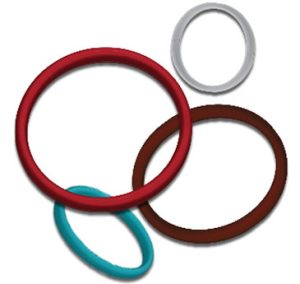
O-rings and lip rings are two of the most common types of mechanical seals for machinery. Machinery often features pressurized liquid or gas. The mating surfaces for pressurized liquid or gas may feature an O-ring or lip ring. The O-ring or lip ring will seal the mating surface to protect against leaks. What’s the difference between O-rings and lip rings exactly?
What Are O-Rings?
O-rings are elastomeric mechanical seals that are shaped like a ring. They are designed to withstand pressure while creating and maintaining a sealed environment. Because they are made of an elastomeric material, O-rings will actually expand when exposed to heat and pressure.
What Are Lip Rings?
Lip rings are elastomeric mechanical seals that have a groove around the inner perimeter. Like O-rings, they are shaped like a ring. Both O-rings and lip rings feature a circular, ring-shaped design. Lip rings, though, have a groove around the inner perimeter.
Differences Between O-Rings and Lip Rings
They may feature a similar shape, but O-rings and lip rings aren’t the same. For starters, lip rings have a groove around the inner perimeter. This groove or “lip” allows them to fit inside a notched mating surface. Plain O-rings don’t have this same inner lip. Instead, plain O-rings have a smooth interior and a smooth exterior.
O-rings and lip rings are also used for different sealing applications. O-rings are commonly used as reciprocating seals. In comparison, lip rings are commonly used as rotating shaft seals. If you need to seal a reciprocating part, you should use an O-ring. If you need to seal a rotating shaft, you should use a lip ring.
With their inner lip, many lip rings can withstand more pressure than O-rings. They will fit into a notched surface where they provide a superior level of protection against leaks. With that said, lip rings aren’t needed for all sealing applications. There are plenty of high-quality O-rings available, many of which can withstand heat and pressure without leaking.
You can find O-rings and lip rings in many of the same materials. They are typically made of an elastomeric material, meaning they won’t suffer from permanent deformation. Elastomeric materials can still deform when exposed to heat and pressure. Once the heat and pressure has been removed, though, elastomeric materials will return to their original size and shape. The main difference is that lip rings have an inner lip, whereas O-rings do not.
